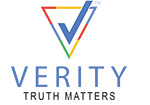
Web 1.0: The Static Web (1991 - Early 2000s)
Web 1.0 was an era of exploration and pioneering. It introduced the world to the wonders of the internet through static web pages and dial-up connections. During this time, AOL and CompuServe emerged as digital citadels, providing curated content and community within their walled gardens. Bulletin Board Systems (BBS) lit up the digital landscape, fostering early online communities and user-generated content. However, this era was characterized by fragmented experiences, as these digital islands were separated by incompatible protocols and clunky interfaces, limiting broader connectivity.
Web 2.0: The Social and Interactive Web (Early 2000s - Present)
Web 2.0 marked a tidal shift towards interactivity and social media. Platforms like Myspace, Facebook, and YouTube transformed the internet into a bustling digital metropolis where information flowed freely, and everyone had a voice. The introduction of AJAX and other dynamic web technologies wove interactivity into the web's fabric, significantly enhancing user experience. Yet, this era also saw the rise of centralized powers and data silos, overshadowing the open and decentralized ethos of the earlier web.
Web 3.0: The Decentralized and Semantic Web (Emerging)
Now, as we stand on the brink of Web 3.0, we face new challenges. This emerging web, driven by blockchain and decentralized technologies, promises a future free from gatekeepers, where trust and ownership are redefined. However, the current state of Web 3.0 resembles a scattered archipelago, with isolated technologies speaking different dialects. This fragmentation hinders the realization of a truly interconnected and seamless web experience.
Addressing the Challenges of Web 3.0
The lessons of the past resonate with these challenges. Web 1.0's fragmentation warns about the dangers of proprietary protocols, while the centralized giants of Web 2.0 remind us of the risks of concentrated power. To foster a unified and accessible Web 3.0, we must prioritize interoperability, collaboration, decentralization, user-centricity, and accessibility.
- Interoperability: Standardized protocols and data formats are essential to bridge the gaps between various Web 3.0 technologies, enabling seamless interaction and value exchange.
- Collaboration: Embracing the spirit of open-source development and community-driven innovation is crucial to break down silos and build holistic solutions.
- Decentralization: Web 3.0 must strive for equitable power distribution, leveraging models like DAOs to ensure control and value lie with the community.
- User-Centricity: Technology must serve humanity. Intuitive interfaces, ethical data practices, and prioritizing user needs are paramount.
- Accessibility: Expanding infrastructure, educational initiatives, and digital literacy programs are key to ensuring universal access to Web 3.0.
The Road Ahead: A Unified Web 3.0
Web 3.0's success hinges on learning from the past while embracing future possibilities. By integrating innovation, interoperability, and user-centricity, we can create a Web 3.0 that transcends isolated islands to become a vast, interconnected ocean of opportunities.
This journey from Web 1.0 to Web 3.0 is a technological evolution and a testament to our ever-changing relationship with digital space. It's a narrative about building a web that serves as an interconnected network of machines and a vibrant, inclusive, and empowering digital ecosystem. The future of Web 3.0 lies in our collective efforts to ensure it benefits not only the technologically adept but everyone, carving out an inclusive, secure, and transformative path.